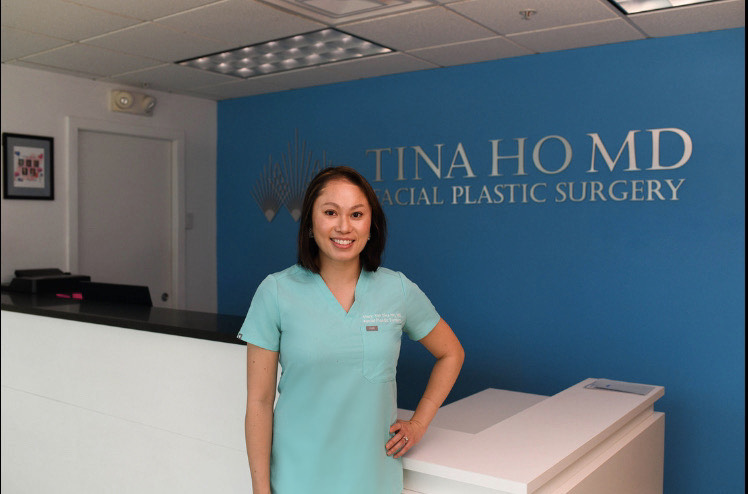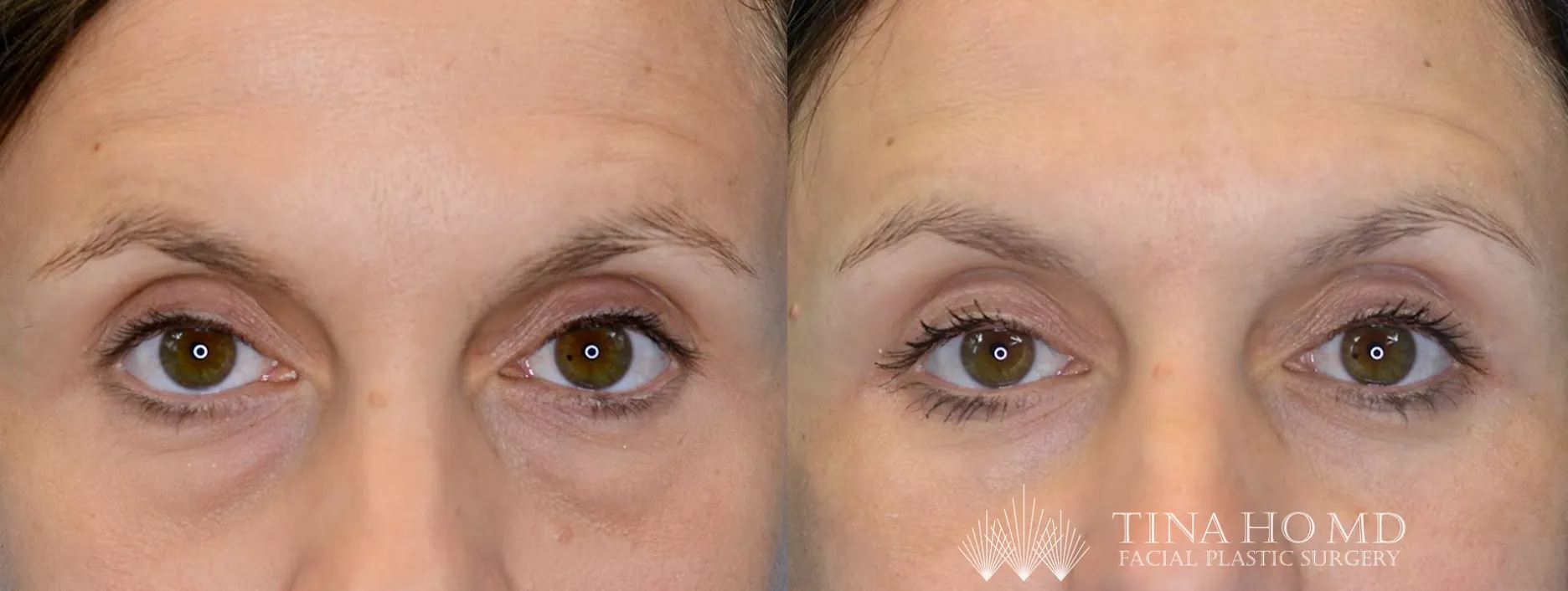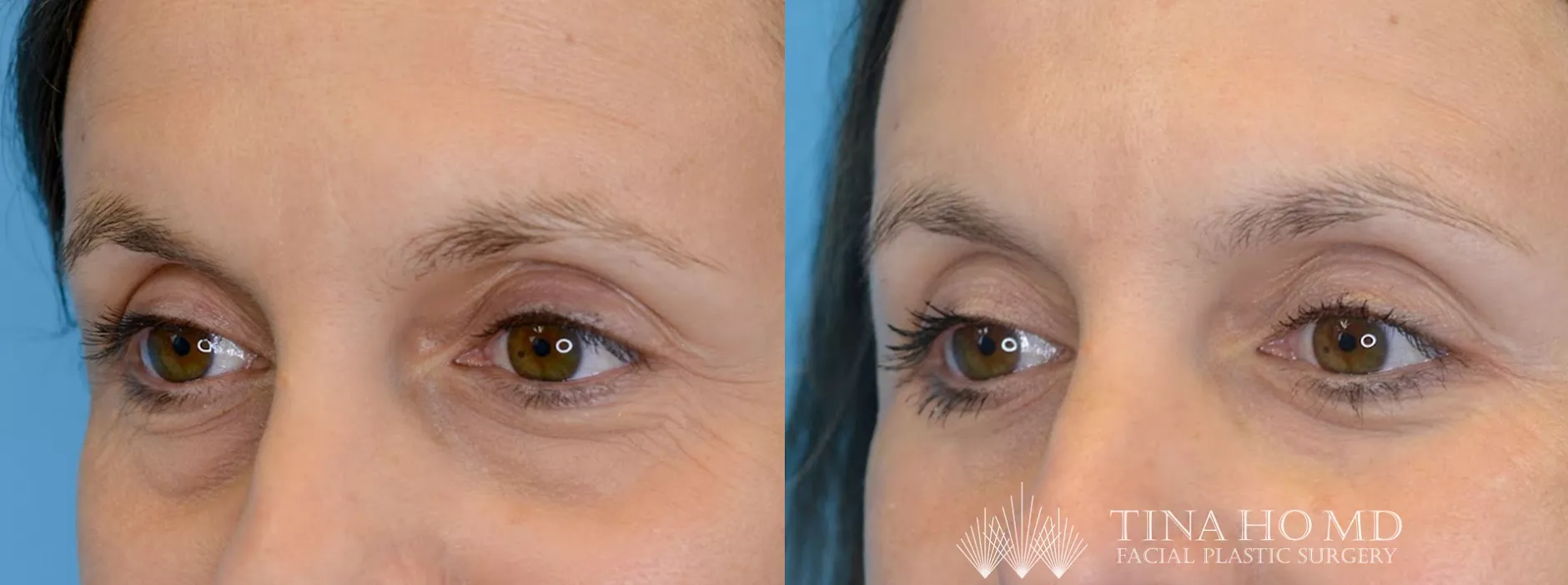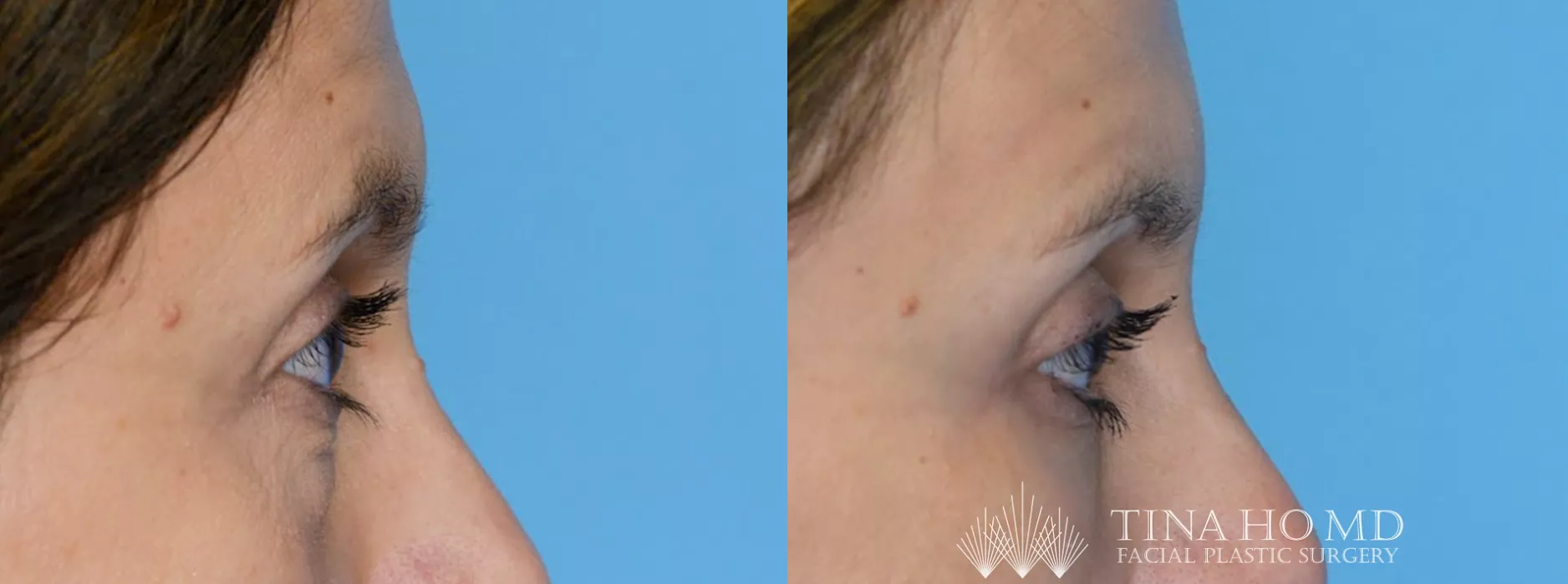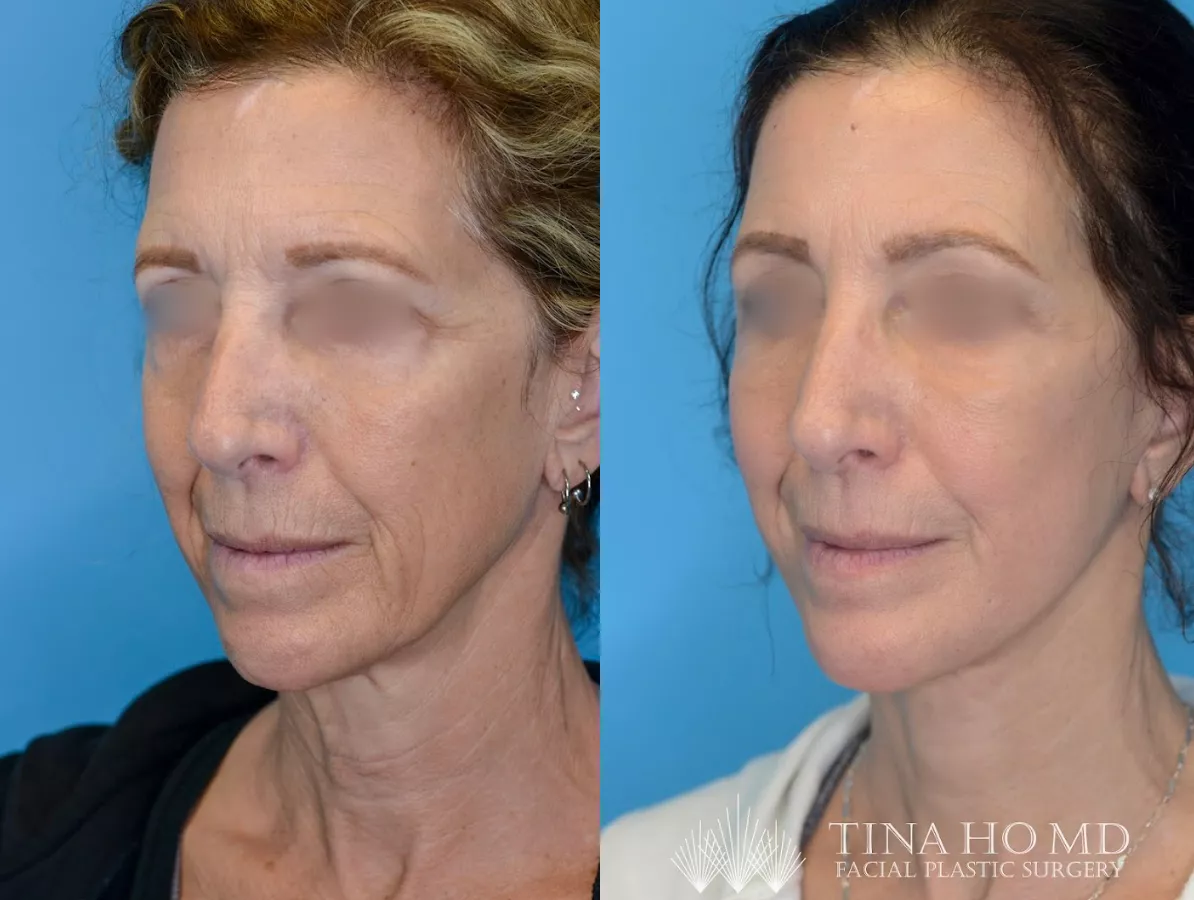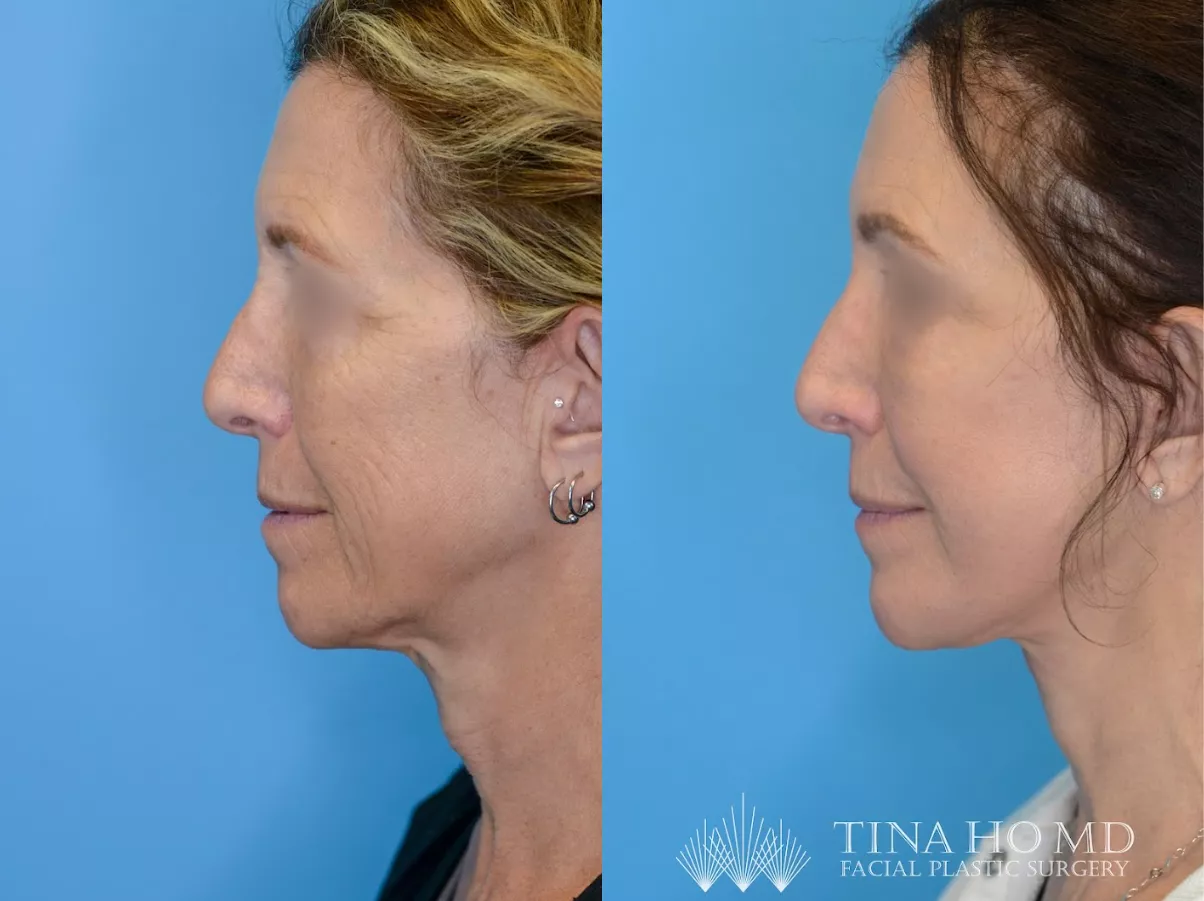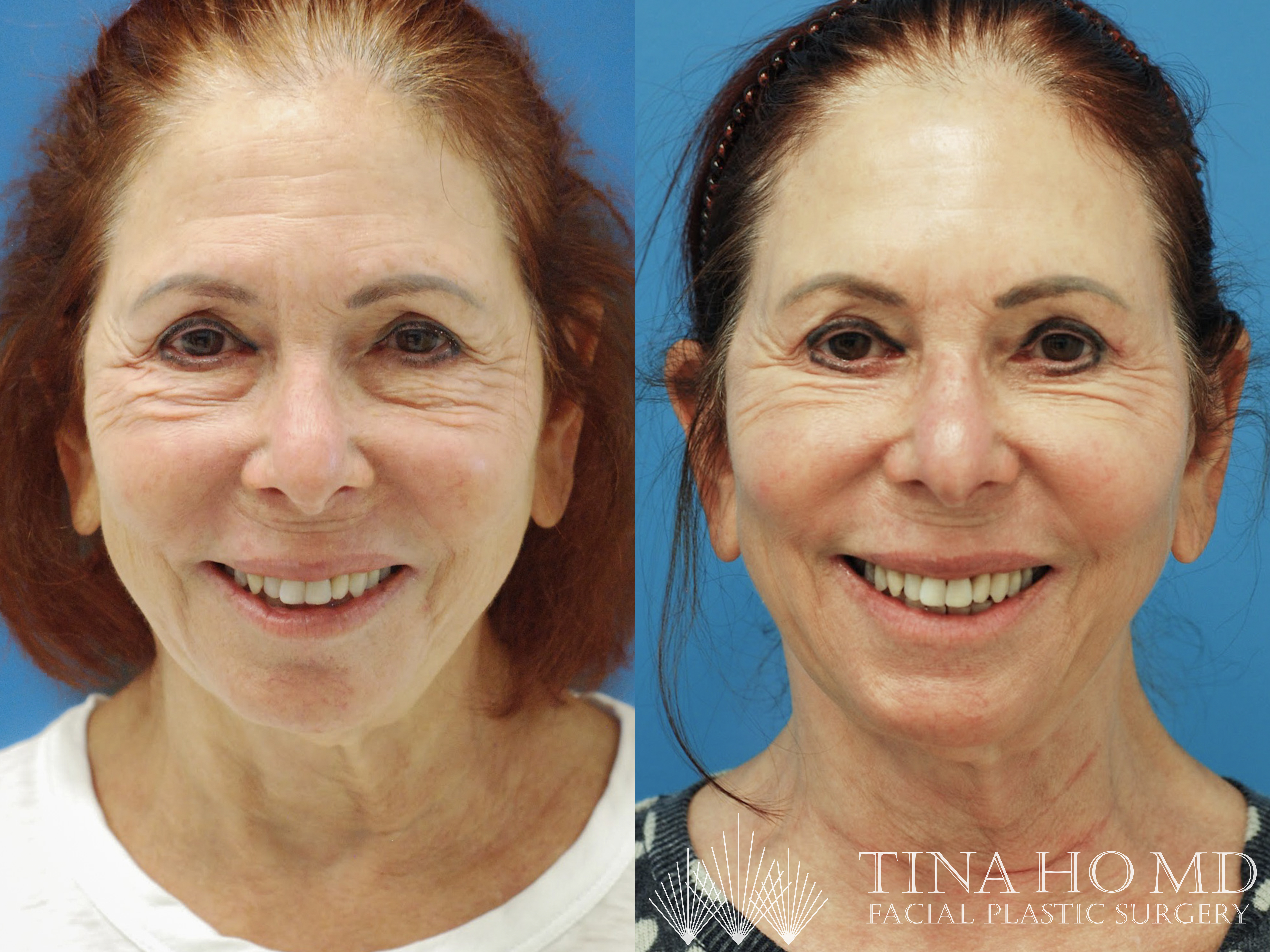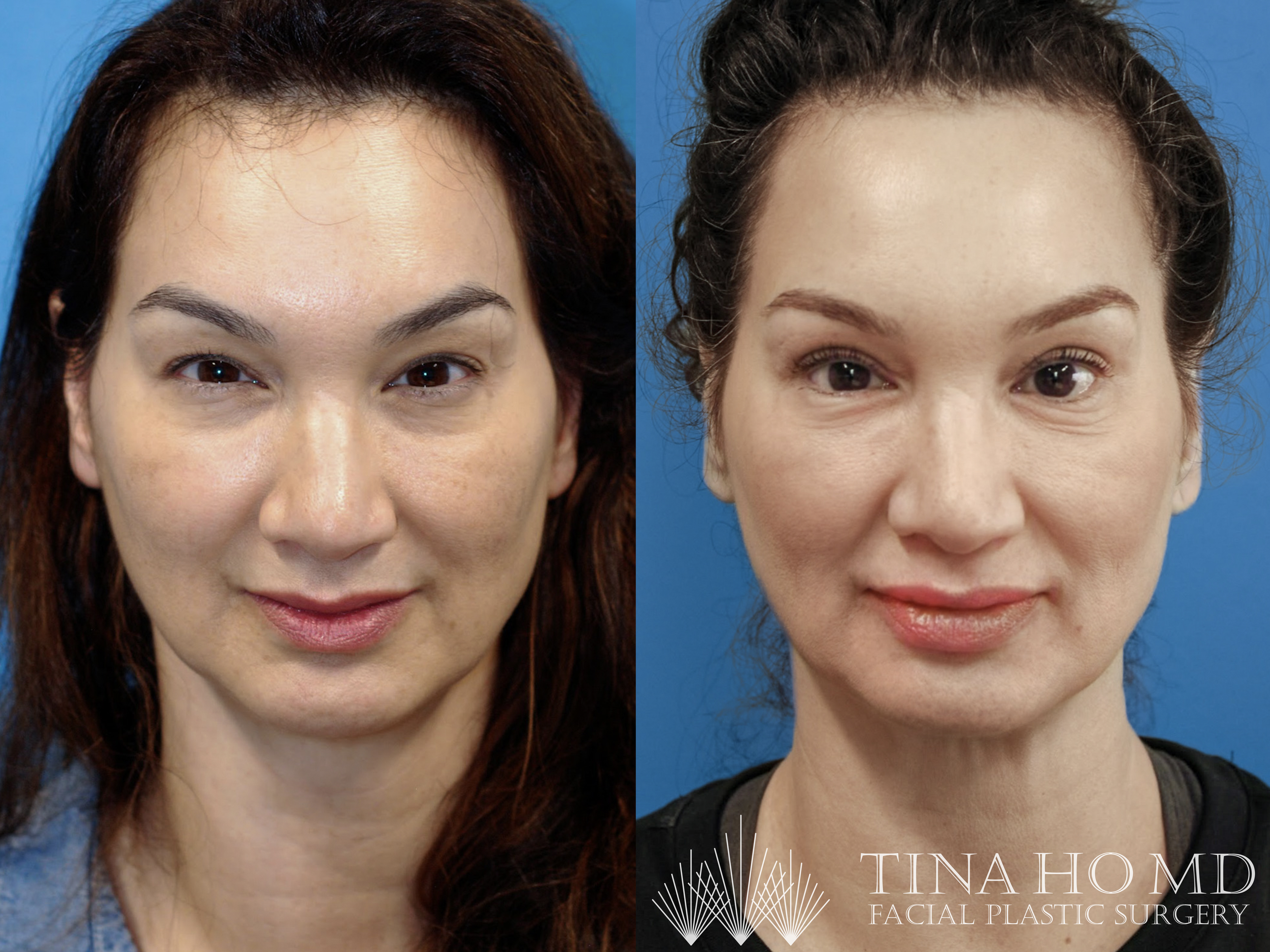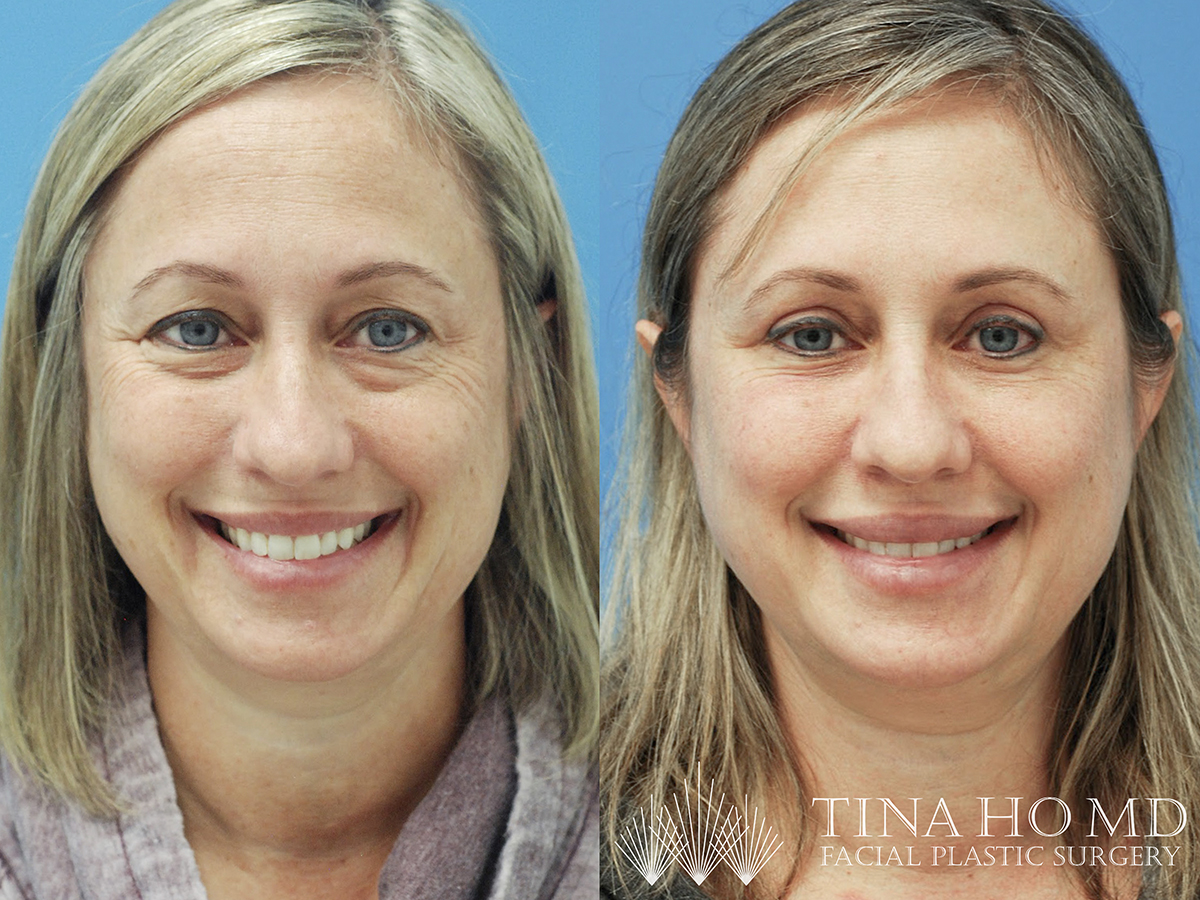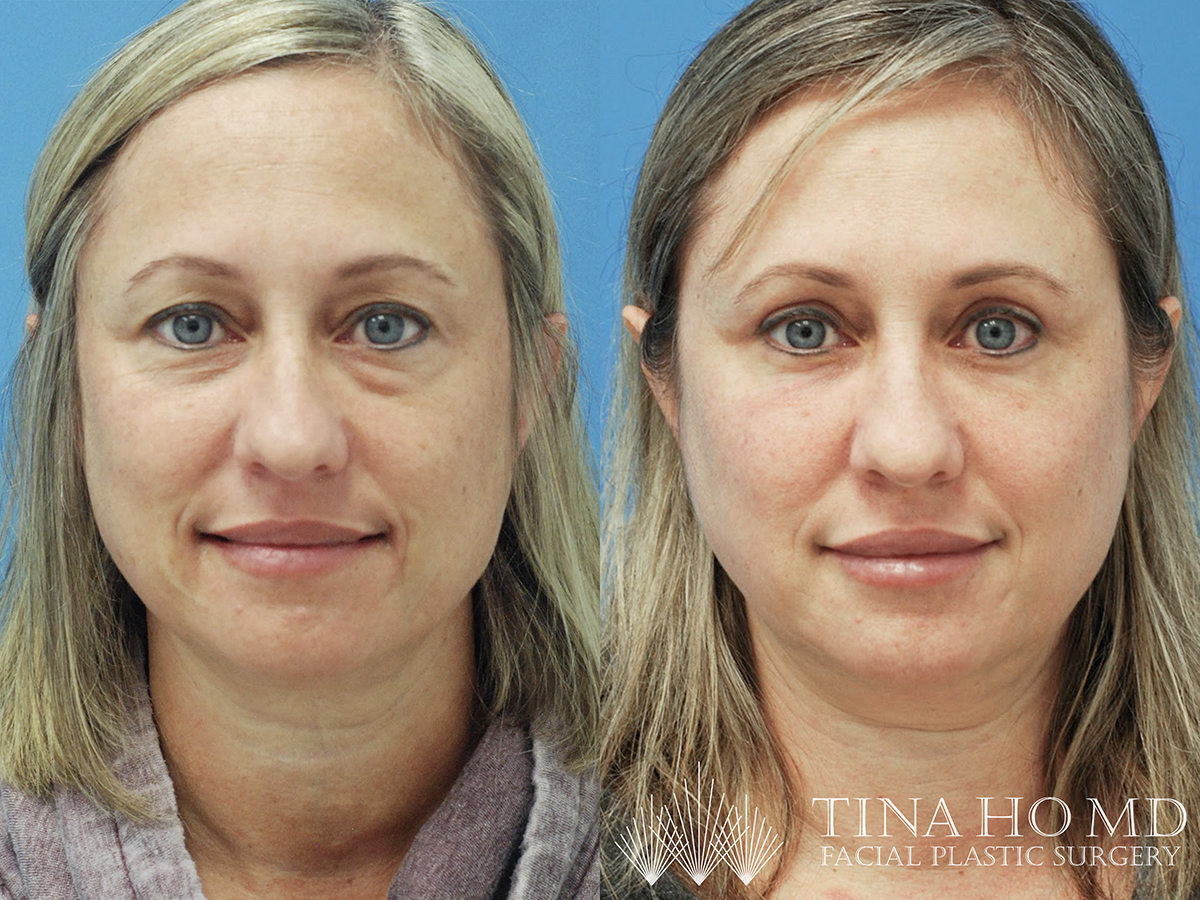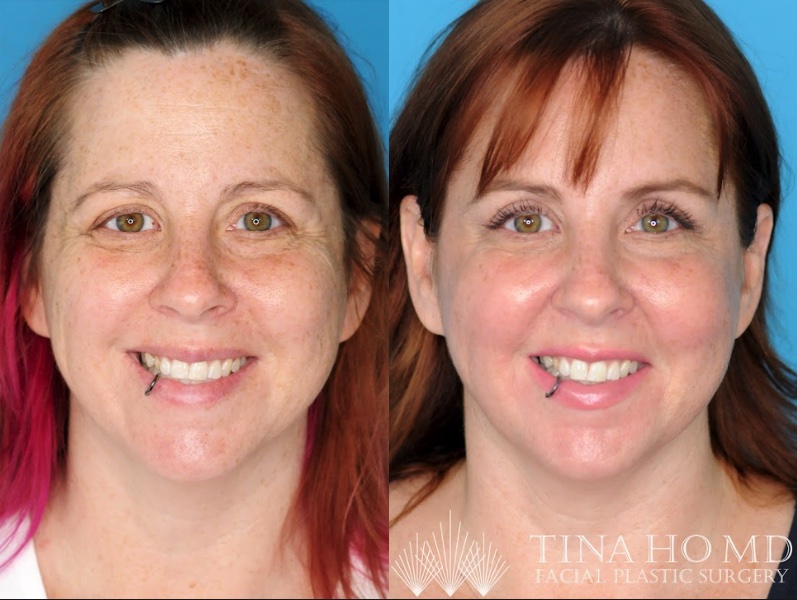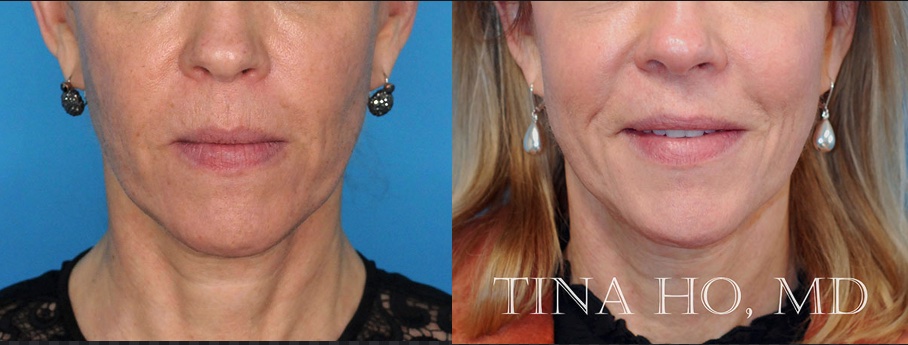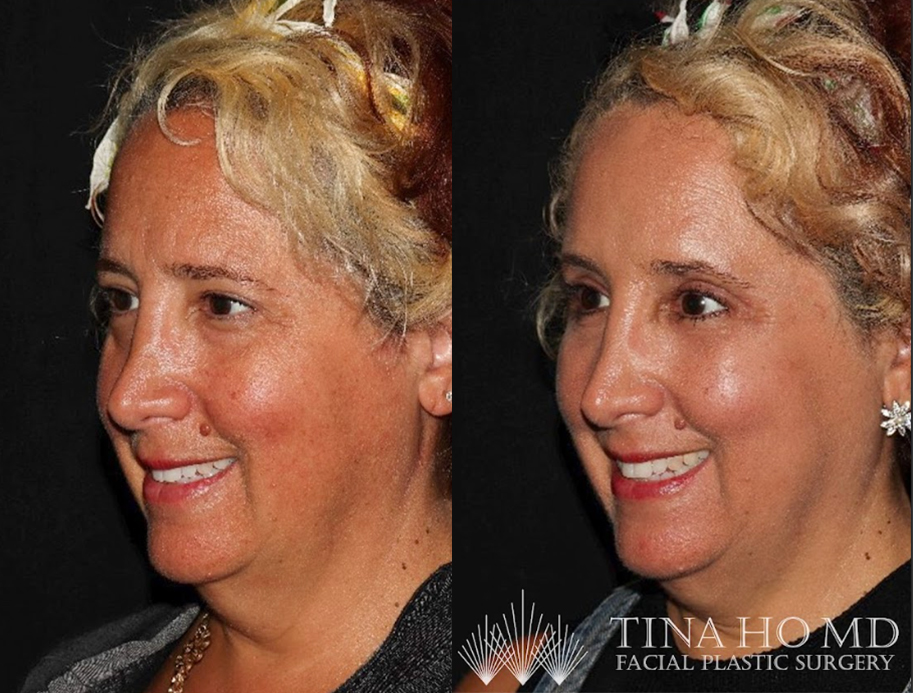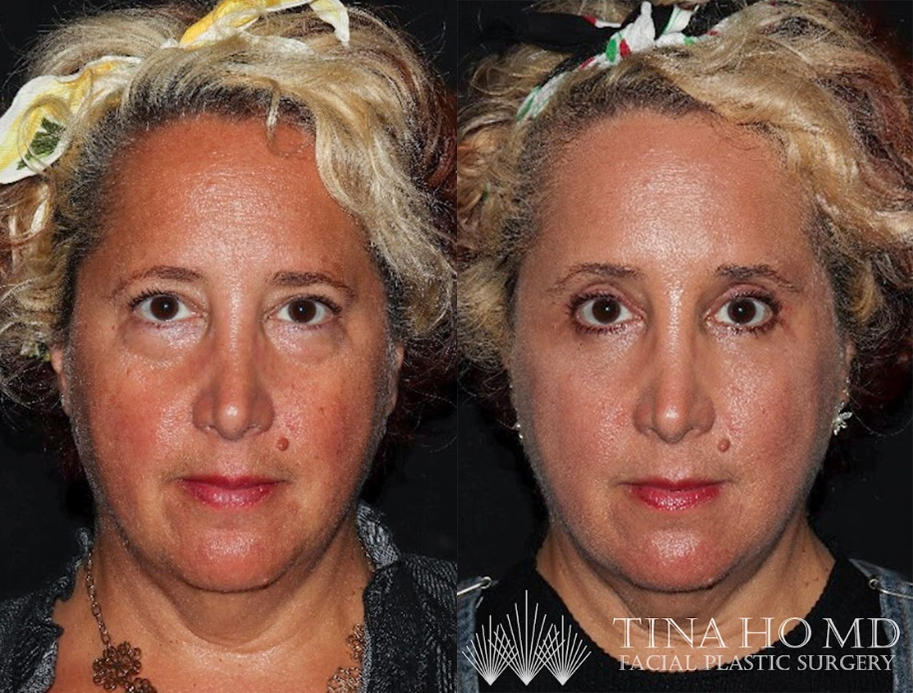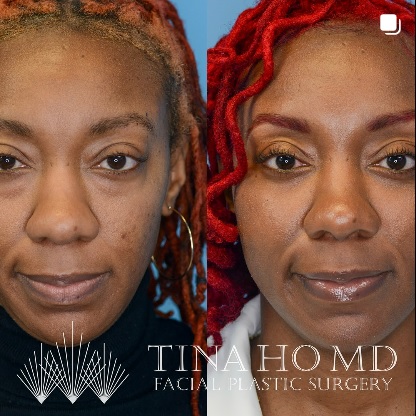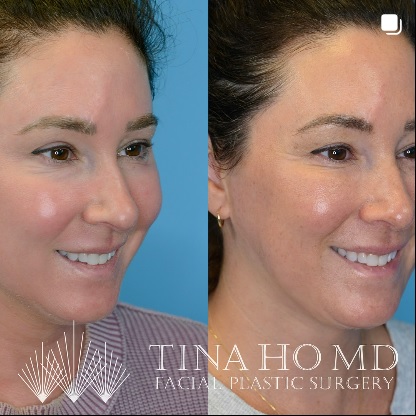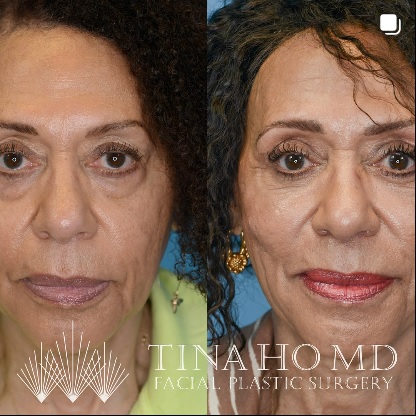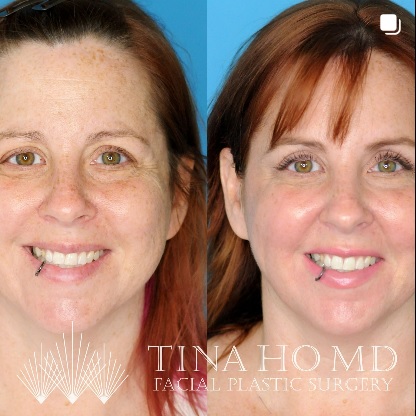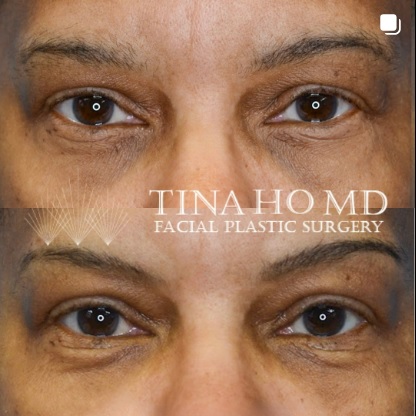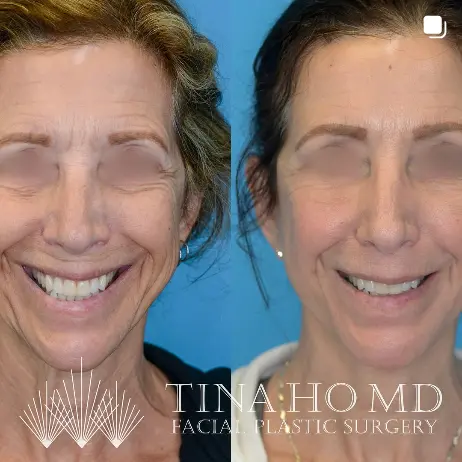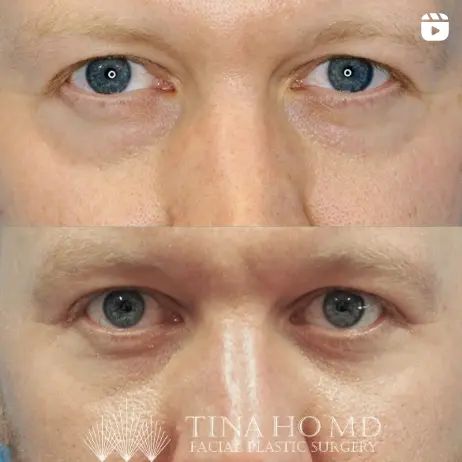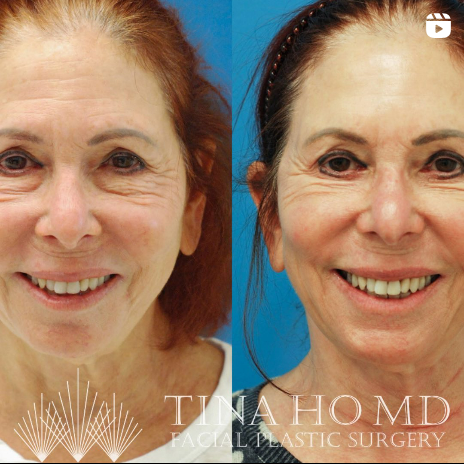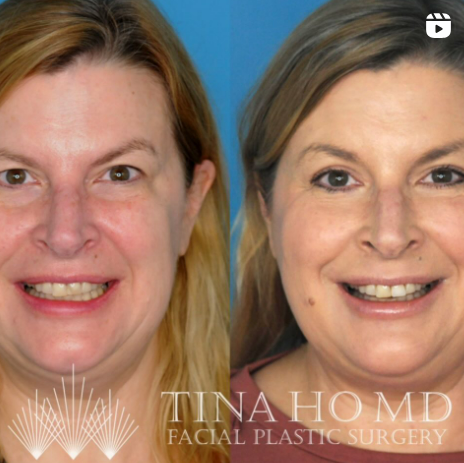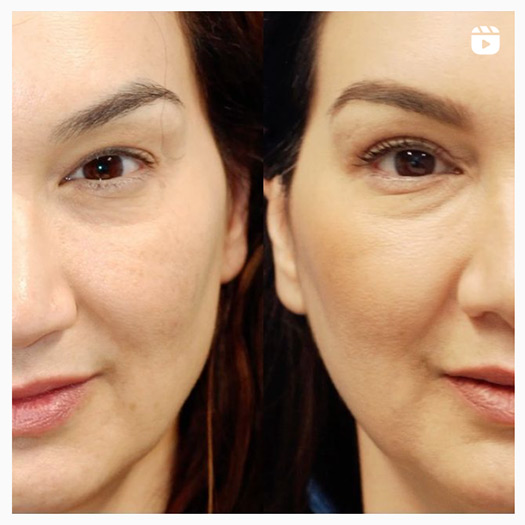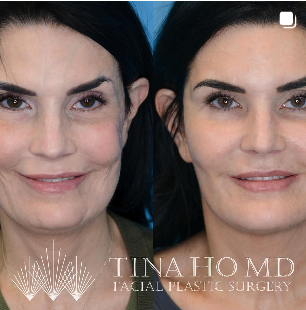Table of Contents
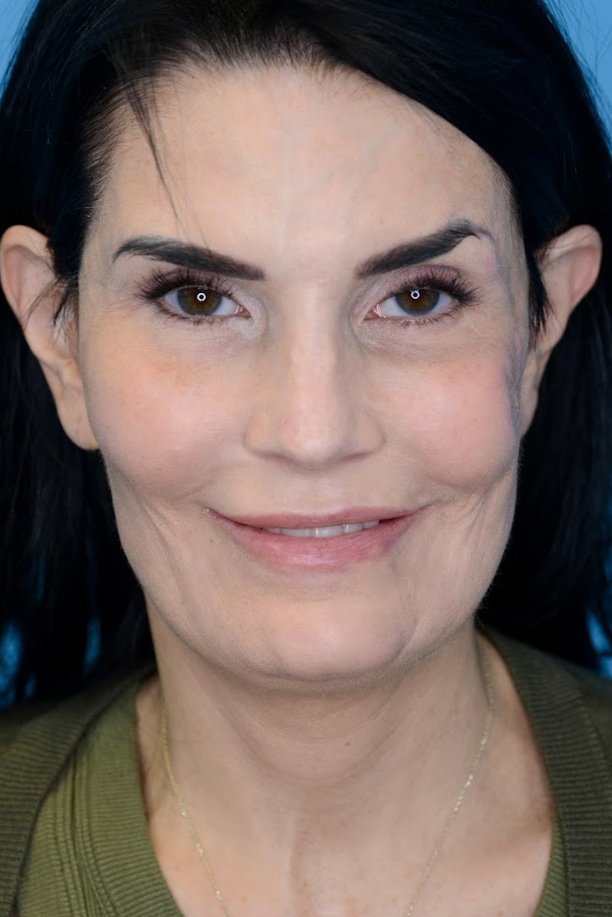
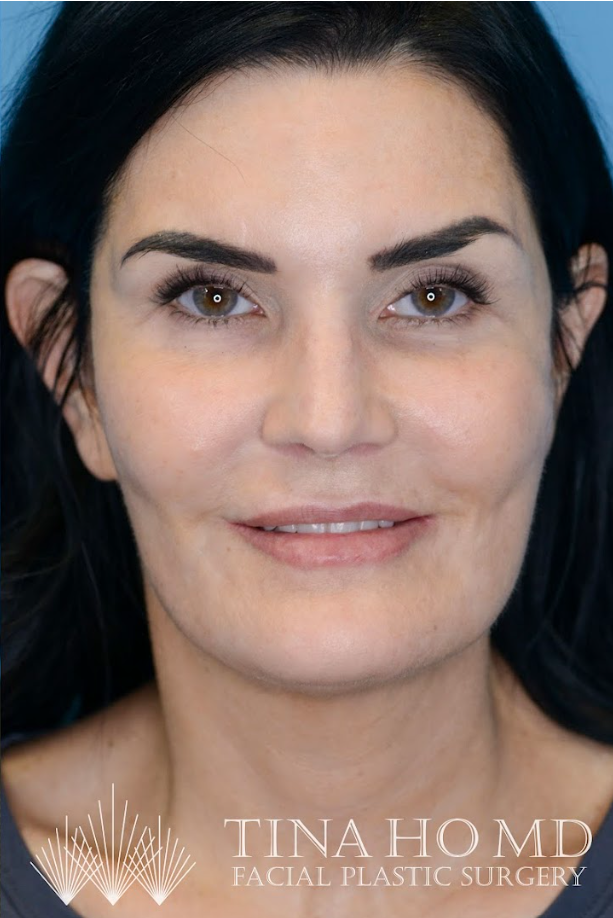
Before & After
View Gallery
Introduction to
Laser Resurfacing
Laser Resurfacing: PATIENT REVIEW AND RESULTS
What is Laser Resurfacing?

Laser resurfacing is one common type of non-surgical procedure utilized in facial skin rejuvenation. Laser resurfacing procedures can be performed to improve certain features of aging skin including wrinkle lines, skin laxity, and dyschromias as well as other skin issues such as acne scars, vascular lesions, and hyperpigmentation. The word laser is an acronym for the phrase light amplification by stimulation of radiation. Each laser device emits light at a specific wavelength to be absorbed by a certain tissue component of the skin that is usually water, hemoglobin, or melanin. Laser procedures intended to improve aging skin stimulate new collagen production and skin regeneration to produce tighter, more youthful appearing skin. Each laser resurfacing procedure is uniquely planned and executed by Dr. Ho according to the skin findings and treatment goals of the individual patient.
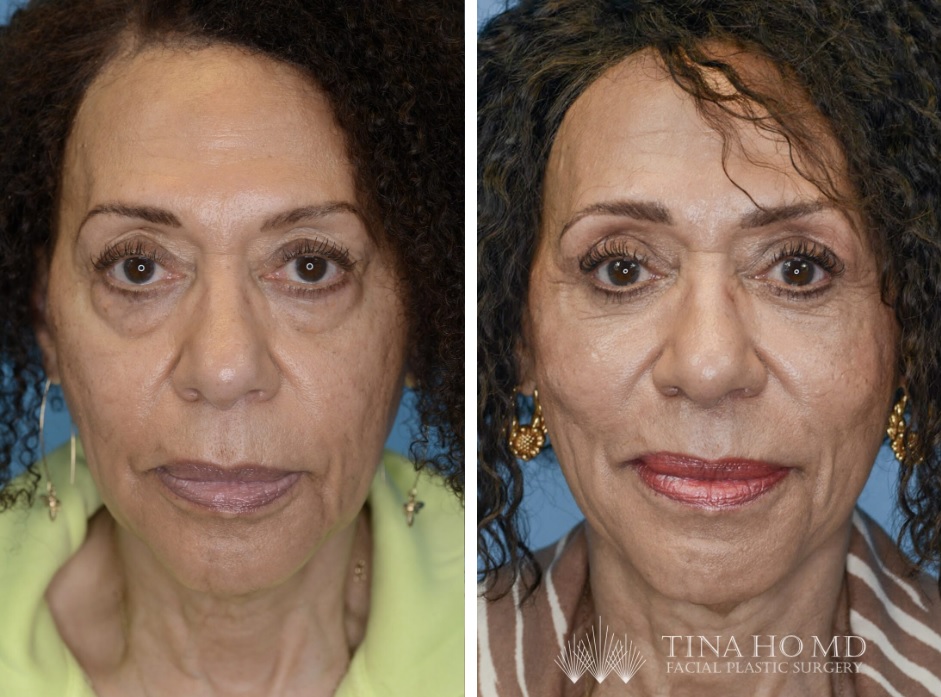
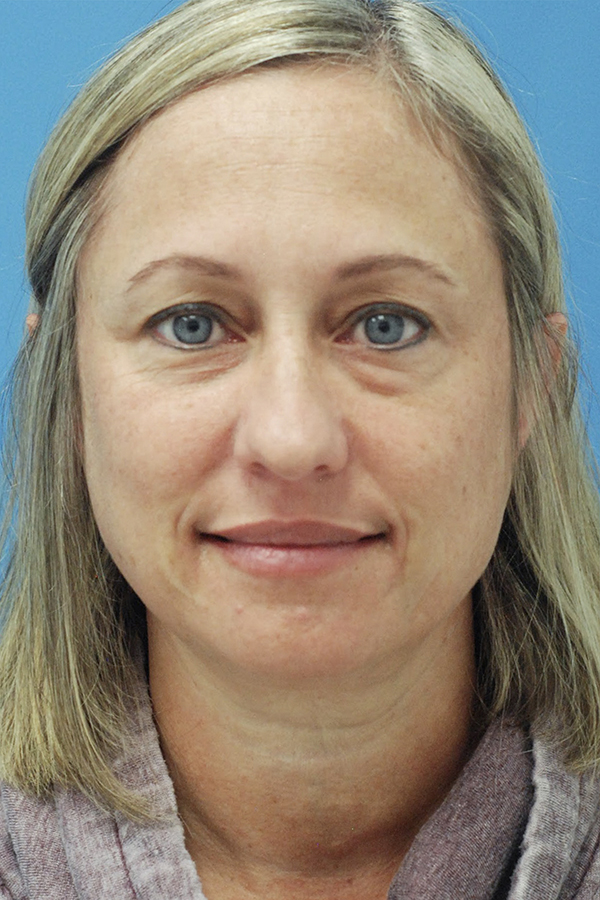
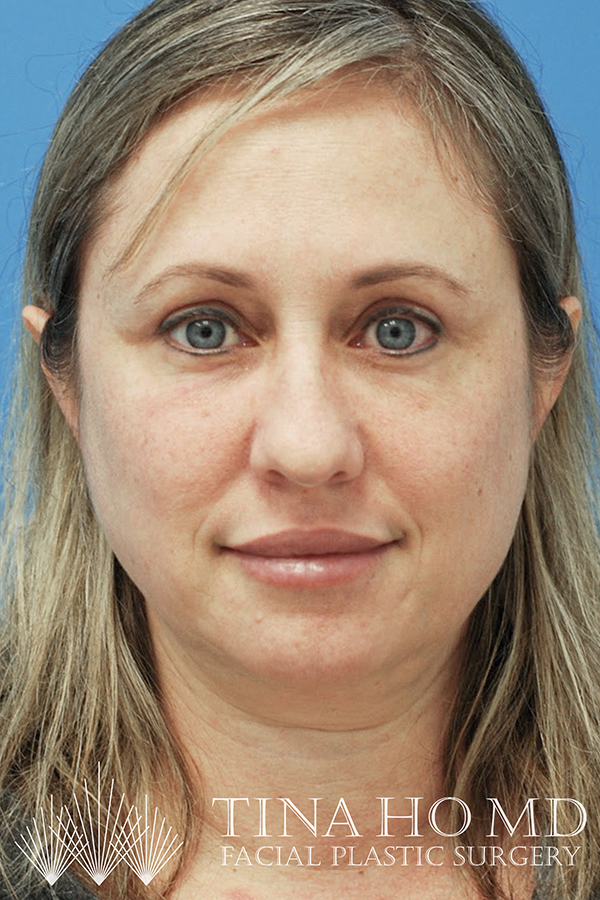
Before & After
View Gallery
Book Now
What are the differences among ablative lasers, nonablative lasers, and fractional lasers?

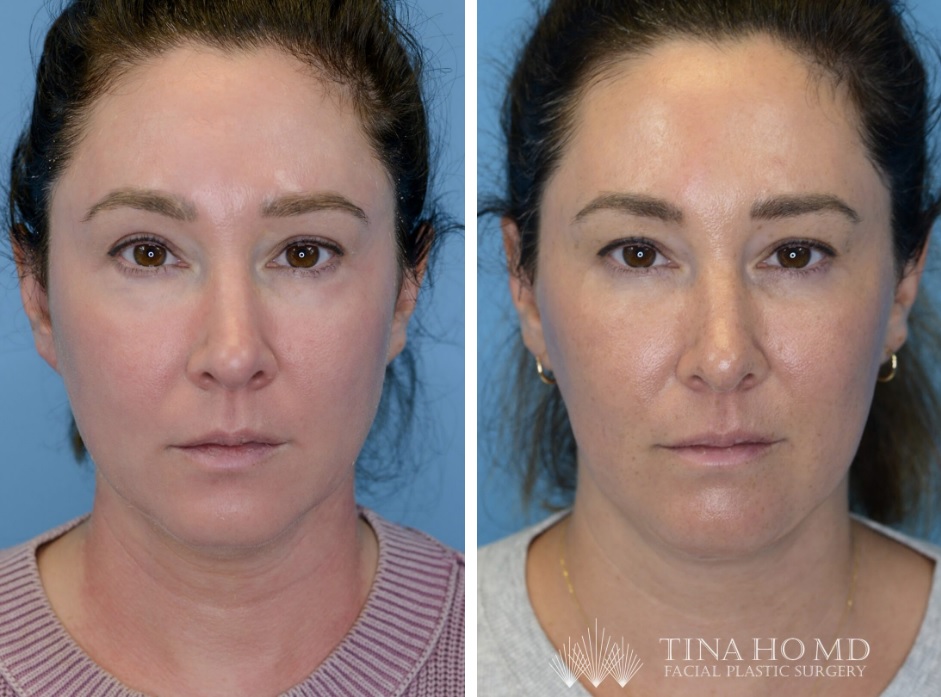
CoolPeel is a revolutionary minimal downtime CO2 laser procedure that reduces fine lines, repairs sun-damaged skin, and improves skin texture.
At Tina Ho, MD Facial Plastic Surgery, we are excited to be one of the few plastic surgery practices in Philadelphia and the Main Line to offer the CoolPeel laser procedure. As part of our introductory promotion for a limited time, when you purchase a CoolPeel package (series of 3 treatments) with us, you will receive a complimentary Alastin Skincare Invasive Kit (a $345 value)!
What is Dr. Ho’s approach to Laser Resurfacing?

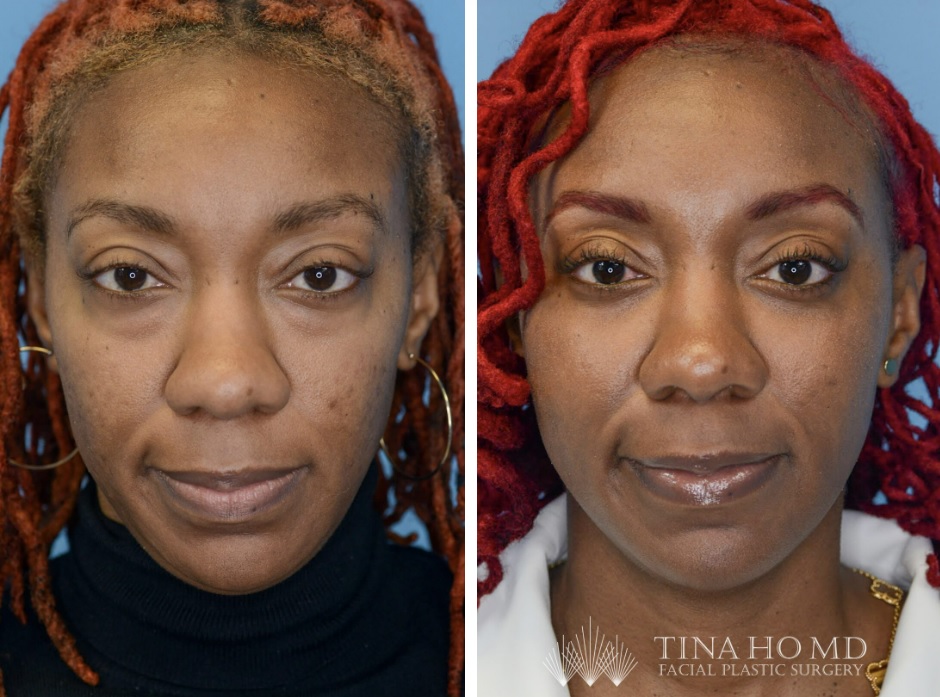
The Cartessa Smartxide Tetra

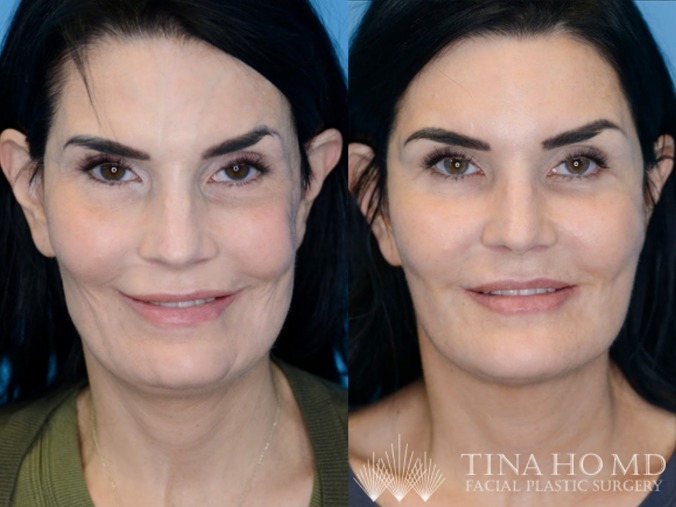
When it comes to a CO2 laser skin resurfacing treatment with minimal downtime, there’s nothing better than the Cartessa Smartxide Tetra. Tina Ho, MD Facial Plastic Surgery is one of select plastic surgery practices in Philadelphia and the Main Line to offer this advanced laser device and perform the specialized CoolPeel procedure, a full-face laser resurfacing treatment that only takes around 5-15 minutes to complete and is quite convenient.
The Cartessa Smartxide Tetra offers clinicians a diverse array of settings that can be tweaked to achieve the desired density, power, and pulse durations. This allows treatments to be precisely optimized according to the conditions to be treated and the results desired by patients.
Manufactured by DEKA, one of the world’s most renowned aesthetic laser manufacturers, this device can be used to treat a number of conditions, such as:
- Fine lines and wrinkles
- Brown spots
- Different types of scars, such as acne scars
- Pigmentation issues like melasma
- Oversized pores
- Sun damage
- Rough texture
- Sagging skin
- Sunspots
- Stretch marks
There are many differences between a CoolPeel treatment and traditional ablative CO2 procedure. A CoolPeel is often performed by aestheticians and offers gentler resurfacing, leading to a shorter recovery period with less downtime. It is specifically used to target only the superficial skin layer, and its energy pulses are very short. Typically, 3-6 treatments are required for optimal results. Dr. Ho and her aesthetician colleagues at Tina Ho, MD Facial Plastic Surgery exclusively offer the CoolPeel procedure for those patients seeking maximal rejuvenative results with minimal downtime.
Traditional ablative CO2 resurfacing, on the other hand, is a deeper-reaching treatment option that only requires a single treatment session and typically requires the expertise of a physician. Because it involves deeper resurfacing than a CoolPeel treatment, it necessitates more downtime afterwards. Dr. Tina Ho routinely performs ablative CO2 laser resurfacing with the Cartessa Smartxide Tetra device on patients in combination with other aging face procedures including eyelid surgery, facelift, neck lift, and facial fat transfer.
Post-Operative Instructions for CO2 Laser

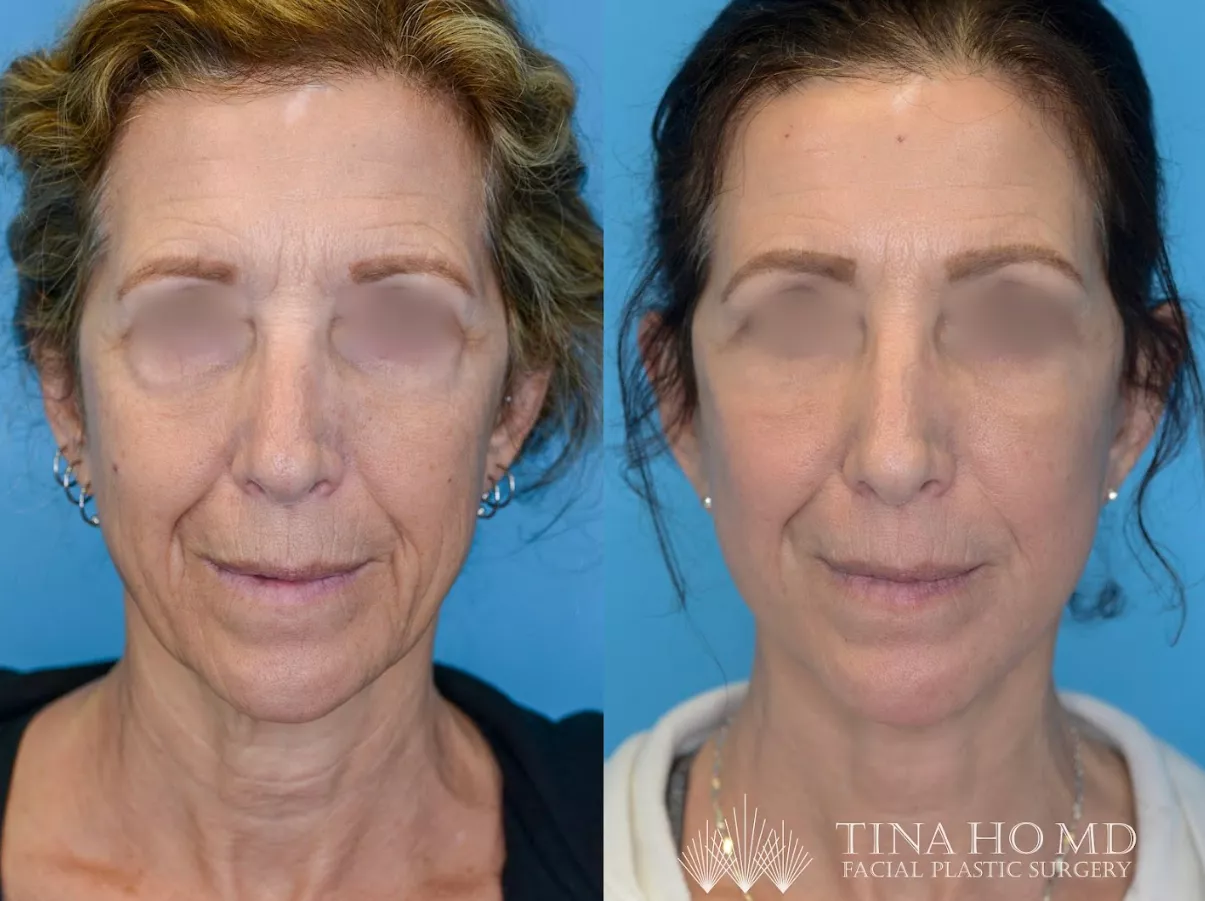
These post-operative care instructions are for laser resurfacing procedures and are designed to help patients achieve the best results. Patients are encouraged to reach out to Dr. Ho or her staff with any questions before or after surgery.
Activity Instructions and Restrictions:
– Patients are advised to resume walking promptly after surgery to prevent blood clots and aid recovery.
– Heavy lifting over 10 pounds, strenuous activity, bending, and straining should be avoided for one week (or two weeks if additional surgical procedures were performed).
– Constipation can be managed with over-the-counter stool softeners like Colace.
– Activities like hot yoga, saunas, and swimming are prohibited for four weeks post-surgery.
– Use of a CPAP machine should only resume after clearance from the surgeon.
Head Positioning:
– To minimize swelling, patients are recommended to keep their head elevated at a 30-degree angle for the first week after the procedure.
– Sleeping in a recliner or with two pillows propped up is advised.
Cool Compresses:
– Cool compresses (ice packs or frozen vegetables) should be applied to treated areas for 20 minutes at a time during the first 48 hours to reduce swelling and discomfort.
Diet:
– Patients are encouraged to resume eating and drinking as tolerated after the procedure. Drinking plenty of fluids helps rehydrate and reduce swelling.
– After general anesthesia, start with gentle, bland foods that encourage appetite and do not upset the stomach.
Bathing:
– Showering can be resumed the day after surgery, but treated areas should not be saturated with water.
– Face washing with a gentle cleanser and tepid water should start the day after the procedure.
Skin Care:
– Occlusive ointment (like Vaseline, Aquaphor, or Alastin Skin Nectar) should be reapplied generously to treated areas four times daily for one week, then tapered to three times daily the second week.
– Face washing should occur 5 times daily for the first two days, then taper to 1-2 times daily, with reapplication of the occlusive ointment after each wash.
Pain Management and Itching:
– Tylenol or prescribed pain medication can be used for pain relief.
– Over-the-counter antihistamines can provide relief for itching.
– Patients are advised not to pick the skin to prevent scarring.
Sun Protection:
– Direct sunlight should be avoided for the first week after the procedure.
– A broad-spectrum sunblock moisturizer (minimum SPF 35) should be applied daily starting one week after the procedure for 6 to 12 months.
Medications:
– Antibiotic, antifungal, and antiviral medications should be taken as prescribed, starting the day before the procedure.
– Completing the entire prescription is crucial.
– Medications should be taken with food to prevent stomach upset.
Self Care:
– Eye glasses and contact lenses can be resumed the day after surgery (one week after eyelid surgery).
– Patients may place gauze between the bridge of the nose and glasses to avoid irritation.
– Lubricating preservative-free eye drops can be used if experiencing eye irritation.
– Makeup application can begin on areas that have healed over one week after the procedure.
– Tweezing eyebrows should be avoided for two weeks.
Driving Restrictions:
– Patients can drive to their first post-operative visit unless taking narcotic pain medication on that day.
Work and Social Activities:
– Return to work or social activities depends on the level of physical activity and public contact involved, but the average patient can do so 3 to 5 days after laser resurfacing.
Follow-up Appointments:
– The first follow-up appointment is scheduled with Dr. Ho to check treated areas and any associated surgery sites.
– Subsequent follow-ups occur at one, three, and six months after the laser resurfacing procedure.
What to Expect After the Procedure:
– Swelling, stinging, and peeling may occur, with improvement typically observed after the skin has healed.
– Pain and discomfort can be managed with Tylenol or prescribed pain medication.
– Treated skin may initially resemble a sunburn, with redness, peeling, and serum exudation.
– Healing generally occurs within one to two weeks, with final results visible at three to six months.
– Any symptoms such as fever, infection signs, fever blisters, nausea, vomiting, drainage, open wound areas, difficulty breathing, or chest pain should prompt immediate contact with Dr. Ho’s office for further evaluation.
Book Now
BEFORE & AFTER PHOTOS
Book Now
“Each laser resurfacing procedure is uniquely planned and executed by me according to the skin findings and treatment goals of the individual patient.”
– Dr. Tina Ho

FAQ’s

What is CoolPeel?
What should patients expect after a Laser Resurfacing procedure?
What are surgical or non-surgical procedures that are routinely performed with Laser Resurfacing?
What is the cost of Laser Resurfacing?
The price of laser resurfacing depends on the type of device required. Cost may vary depending on number and size of treatment areas, intensity of treatment, and number of treatments needed.
Book Now

